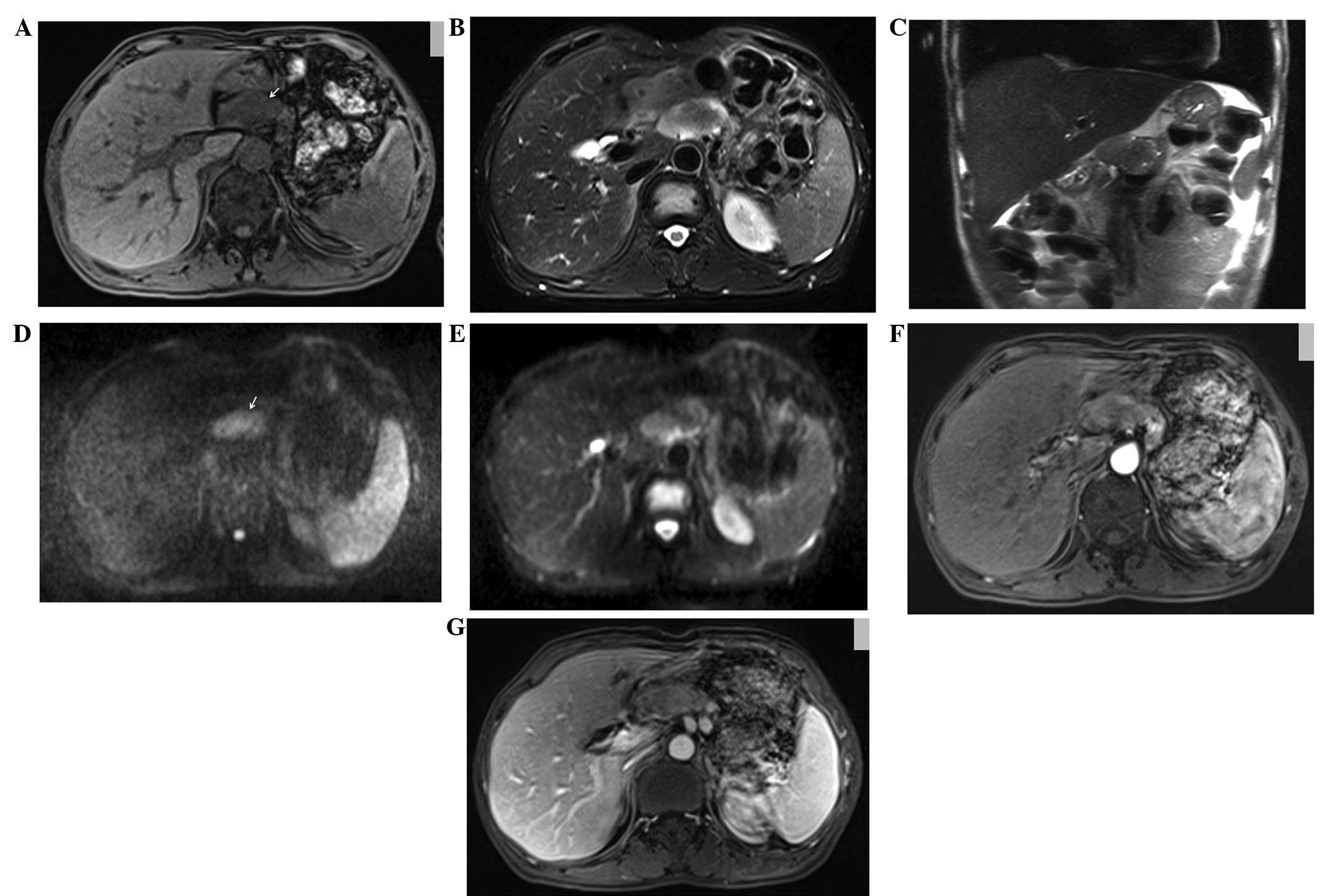
Imaging features of glucagonoma syndrome: A case report and review of the literature
- Authors:
- Wei-Fu Lv
- Jian-Kui Han
- Xin Liu
- Shi-Cun Wang
- Bo Pan
- Ao Xu
View Affiliations
Affiliations: Positron Emission Tomography/Computed Tomography Center, Qilu Hospital, First Affiliated Hospital of Shandong University, Jinan, Shandong 250012, P.R. China, Positron Emission Tomography/Computed Tomography Center, Affiliated Anhui Provincial Hospital of Anhui Medical University, Hefei, Anhui 230001, P.R. China, Department of Pathology, Affiliated Anhui Provincial Hospital of Anhui Medical University, Hefei, Anhui 230001, P.R. China
- Published online on: February 3, 2015 https://doi.org/10.3892/ol.2015.2930
-
Pages:
1579-1582
-
Copyright: © Lv
et al. This is an open access article distributed under the
terms of Creative
Commons Attribution License.
Metrics: Total
Views: 0 (Spandidos Publications: | PMC Statistics: )
Metrics: Total PDF Downloads: 0 (Spandidos Publications: | PMC Statistics: )
This article is mentioned in:
Abstract
Glucagonoma syndrome appears as an extremely rare neuroendocrine tumour, with few studies ever having detailed its imaging manifestations. In particular, the magnetic resonance imaging (MRI) features of the lesion have not yet been reported. The present study describes a 54‑year‑old male who presented with uncontrollable skin erythema and weight loss that had been apparent for two years, and diabetes mellitus that had been apparent for five years. The glucagon level was 180 pg/ml. The plain abdominal computed tomography (CT) scan revealed a solid tumour in the neck of the pancreas, which was slightly reinforced during the arterial phase of the enhanced CT scan. Upon MRI, the lesion exhibited a low signal on T1‑weighted imaging, and a slightly high signal on T2‑weighted and half‑Fourier acquisition single‑shot turbo spin echo sequence imaging, which measured ~4.5x3.0x3.0 cm in size. Upon diffusion‑weighted imaging, the lesion demonstrated heterogeneous hyperintensity, which was mildly enhanced during the arterial phase and washed out during the portal venous phase of gadopentetate dimeglumine‑enhanced MRI. 18F‑fludeoxyglucose (18F‑FDG) positron emission tomography (PET)‑CT identified a mild uptake of 18F‑FDG by the lesion. The patient was diagnosed with glucagonoma syndrome, and a distal pancreatectomy and splenectomy were subsequently performed. Microscopy revealed that the tumour cells exhibited nest‑ and belt‑like arrangements. The immunohistochemical staining identified positive reactions for glucagon, synaptophysin and chromogranin A, which are consistent with a diagnosis of glucagonoma. Following surgery, the symptoms disappeared and the glucagon level returned to normal. In conclusion, imaging examinations are useful for determining the location and size of a glucagonoma. In particular, MRI is able to identify the distinctive morphological features of the lesion. Immunohistochemical staining provides diagnostic evidence based upon the neuroendocrine features.
View References
|
1
|
Bhosale PR, Menias CO, Balachandran A, et
al: Vascular pancreatic lesions: spectrum of imaging findings of
malignant masses and mimics with pathologic correlation. Abdom
Imaging. 38:802–817. 2013. View Article : Google Scholar
|
|
2
|
Hellman P, Andersson M, Rastad J, Juhlin
C, et al: Surgical strategy for large or malignant endocrine
pancreatic tumors. World J Surg. 24:1353–1360. 2000. View Article : Google Scholar : PubMed/NCBI
|
|
3
|
Wermers RA, Fatourechi V, Wynne AG, et al:
The glucagonoma syndrome. Clinical and pathologic features in 21
patients. Medicine (Baltimore). 75:53–63. 1996. View Article : Google Scholar
|
|
4
|
Castro PG, de León AM, Trancón JG, et al:
Glucagonoma syndrome: a case report. J Med Case Rep. 5:4022011.
View Article : Google Scholar : PubMed/NCBI
|
|
5
|
Teixeira RC, Nico MM and Ghideti AC:
Necrolrolytic migratortory erythema associated with glucagonoma: a
report of 2 cases. Clinics (Sao Paulo). 63:267–270. 2008.
View Article : Google Scholar
|
|
6
|
McGavran MH, Unger RH, Recant L, et al: A
glucagon-secreting alpha-cell carcinoma of the pancreas. N Engl J
Med. 274:1408–1413. 1966. View Article : Google Scholar : PubMed/NCBI
|
|
7
|
Becker SW, Kahn D and Rothman S: Cutaneous
manifestations of internal malignant tumors. Arch Dermatol
Syphilol. 45:1069–1080. 1942. View Article : Google Scholar
|
|
8
|
Nissan N, Golan T, Furman-Haran E, et al:
Diffusion tensor magnetic resonance imaging of the pancreas. PLoS
One. 9:e1157832014. View Article : Google Scholar : PubMed/NCBI
|
|
9
|
Naswa N, Sharma P, Kumar A, et al:
Gallium-68-DOTA-NOC PET/CT of patients with gastroenteropancreatic
neuroendocrine tumors: a prospective single-centre study. AJR Am J
Roentgenol. 197:1221–1228. 2011. View Article : Google Scholar : PubMed/NCBI
|
|
10
|
Stacpoole PW: The glucagonoma syndrome:
clinical features, diagnosis, and treatment. Endocr Rev. 2:347–361.
1981. View Article : Google Scholar : PubMed/NCBI
|
|
11
|
Papavramidis T and Papavramidis S: Solid
pseudopapillary tumors of the pancreas: review of 718 patients
reported in English literature. J Am Coll Surg. 200:965–972. 2005.
View Article : Google Scholar : PubMed/NCBI
|
|
12
|
Norton JA, Harris EJ, Chen Y, et al:
Pancreatic endocrine tumors with major vascular abutment,
involvement, or encasement and indication for resection. Arch Surg.
146:724–732. 2011. View Article : Google Scholar : PubMed/NCBI
|













